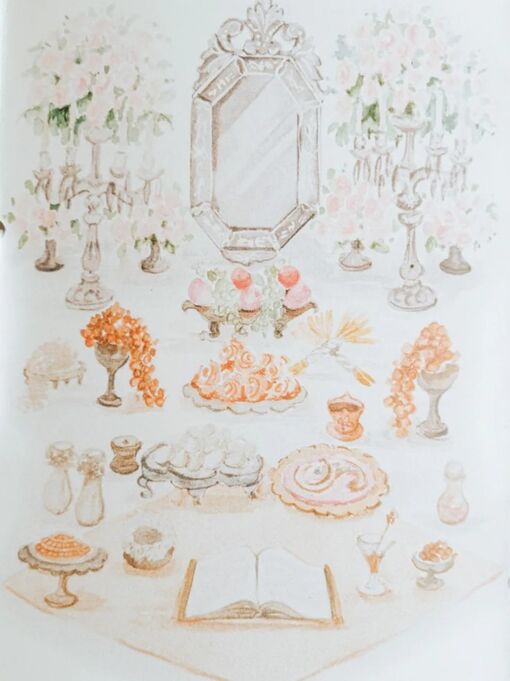
Parisima & Amin
Parisima & Amin
Sofreh Aghd

♥ The aayeneh (mirror), symbolises clarity, honesty, and purity. Traditionally the couple look into the mirror together as a metaphor of them looking ahead at their future.
♥ The shamdoons (candle holders) represent brightness and eternal passion.
♥ Kalleh ghand (sugar cones) are rubbed above a unity cloth during the ceremony over the couple’s head. This practice literally translates to showering the couple’s life with sweetness.
♥ A holy book or poetry book is traditionally placed in front of the couple as a symbol of their faith.
♥ The Termeh (traditional silk cloth) is typically handed down from generation to generation to symbolise the importance of family and tradition.
♥ Atel batel (an assortment of seven spices and herbs) guards against the evil eye.
♥ Naane sangak (pebbled-bread) and meeveh (fruits) represent prosperity and abundance.
♥ Tokhme morgh (eggs) as well as badoom, gandom, va gerdoo (almond, wheat and walnut) are placed across the table to signify good fortune and fertility for the couple.
♥ Soozan nakh (needle and thread) represent the ritual of two people becoming one and the metaphoric sewing of two families together.
♥ Shakhe nabat (rock candy), noghl (almond candy) shirini (pastries) also represent sweetness in the life of the newlyweds. You’ll see a jar of assal (honey) which is used to conclude the ceremony and seal the couple’s vows to each other.